The Moon Rigel Pro uses an aluminium body that makes it a robust light. As such, it is claimed to have an impressive waterproofing rating of IPX7, which can be submerged in one metre of water for 30 minutes. So, it should easily shake off a soaking.
It also benefits from CNC machining, with a heat sink to help keep it cool. What's more, there is an overheating safety system to protect the light.
The Rigel Pro has an output of 1,000 lumens from two LEDs. It also features an anti-dazzle lens cover that can be used on the road.
Whether you run the light on or below the handlebars, this can be flipped. I removed it for full brightness.
There's more tech in this light than you might expect. It has two steady modes and four flashing modes. Fortunately, you don't have to cycle through every mode.
You can toggle between the two continuous modes, and you must double-press the function button to access the flashing modes.
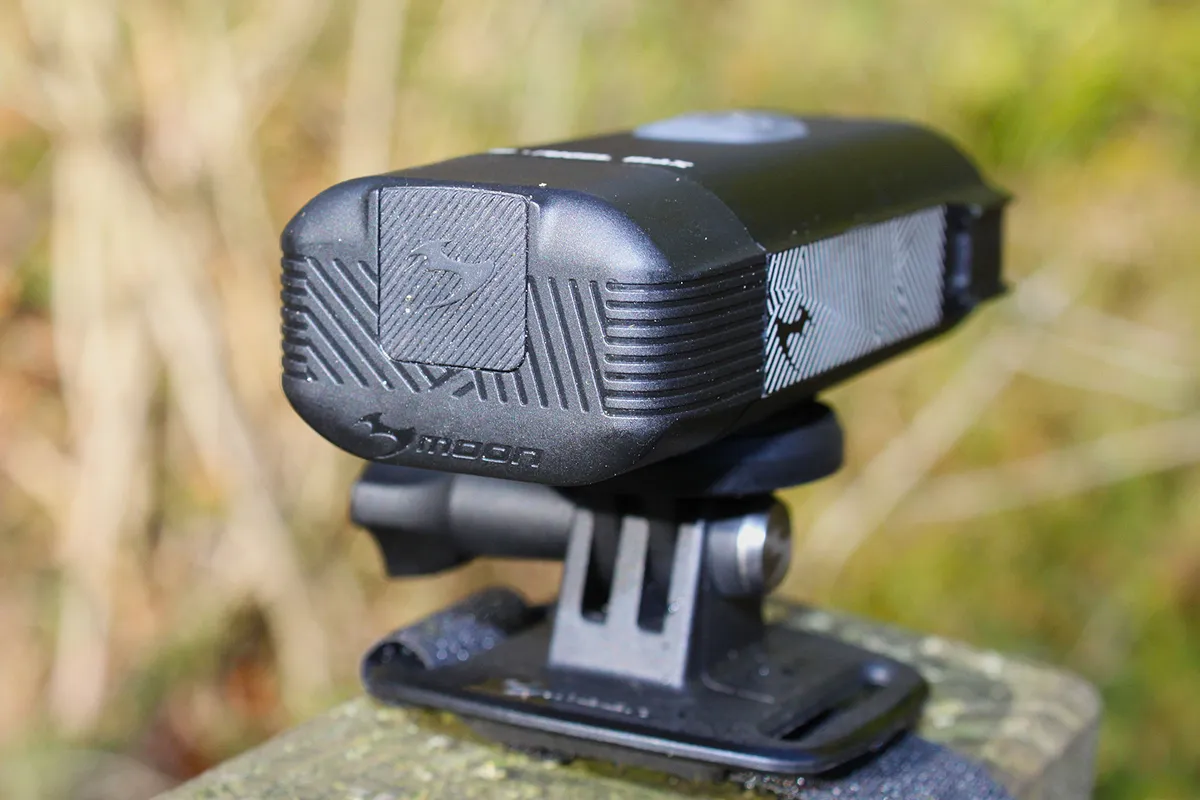
The two steady modes can also be tailored to suit your preferred lumen output. As standard, they are set at 1,000 lumens and 350 lumens.
This can be adjusted using Moon's Variable Lumen System. Holding the function button in a specific mode will activate the system. The light increases then decreases in brightness. Releasing the button sets that mode's lumen output.
There's no dial or display to tell you how many lumens you've selected, though.
It also features Moon's Intelligent Operation. If turning the light on is too much effort, you can access the IO mode by holding down the function button for three seconds when the light is off. This means the light will turn itself on when it detects darkness.
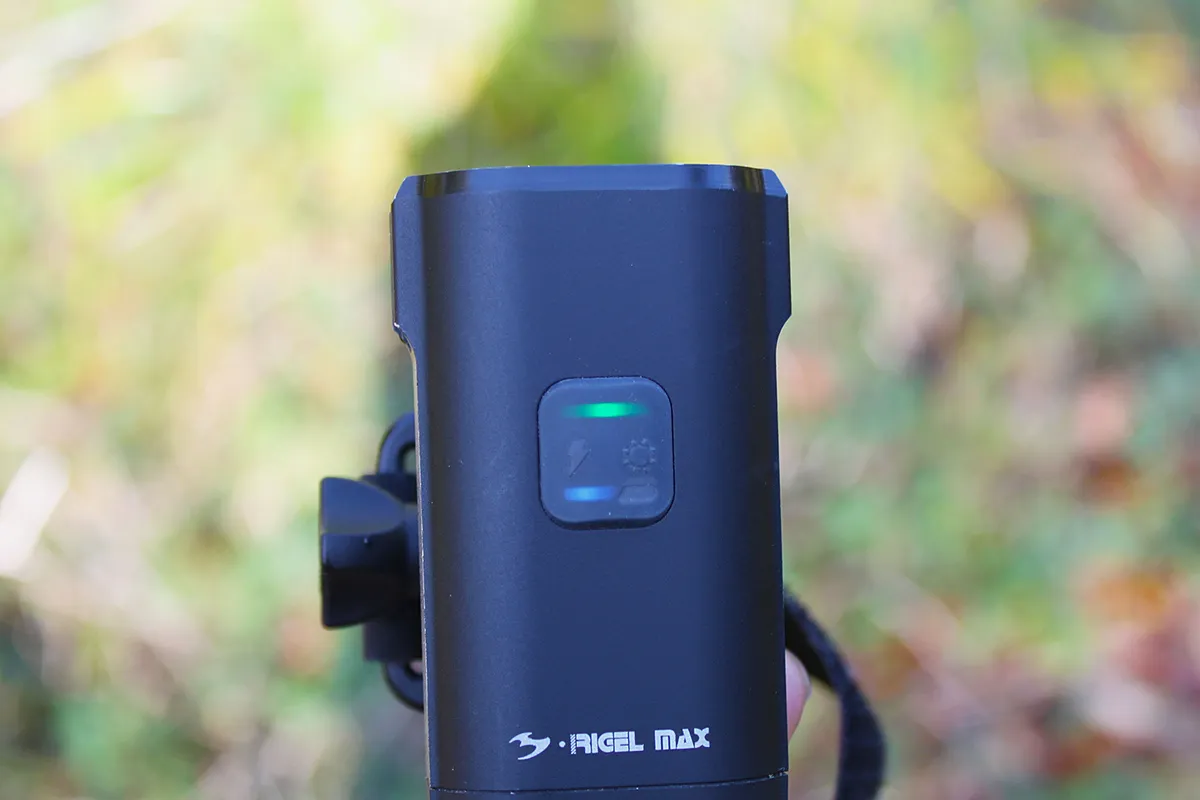
Furthermore, if the light recognises no movement for 20 seconds, it will reduce power to 20 lumens. After 60 seconds, it goes into standby, then deep sleep after an hour.
The mount uses a slightly curved padded base and Velcro strap to attach to a helmet. The light is secured with a Garmin mount.
Charging the 2,200mAh battery uses a USB-C port and takes a claimed three hours. The function button also serves as a battery-charge indicator.
It changes to red at 25 per cent battery remaining and flashes red at 10 per cent.
Moon Rigel Pro helmet light performance
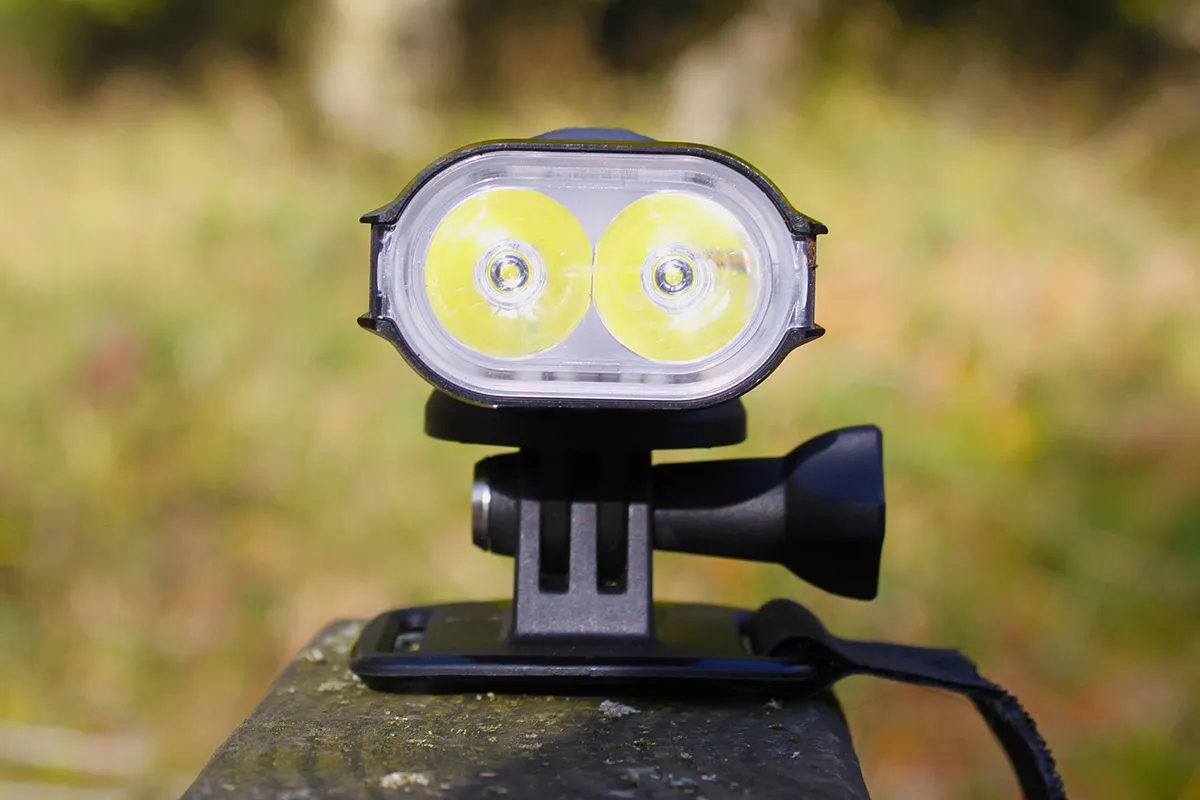
Attaching the mount to a helmet is straightforward, and there is plenty of strap length to tension the mount and secure it tightly.
The padding is helpful to help prevent slipping and protect the shell. The light stayed securely in place throughout testing and didn't rattle.
Having two modes in the continuous setting makes the light very easy to use. I left the modes as standard, using the full-power 1,000 lumens for trail riding and the 350-lumen setting for climbing.
Having the ability to adjust these is useful, though.
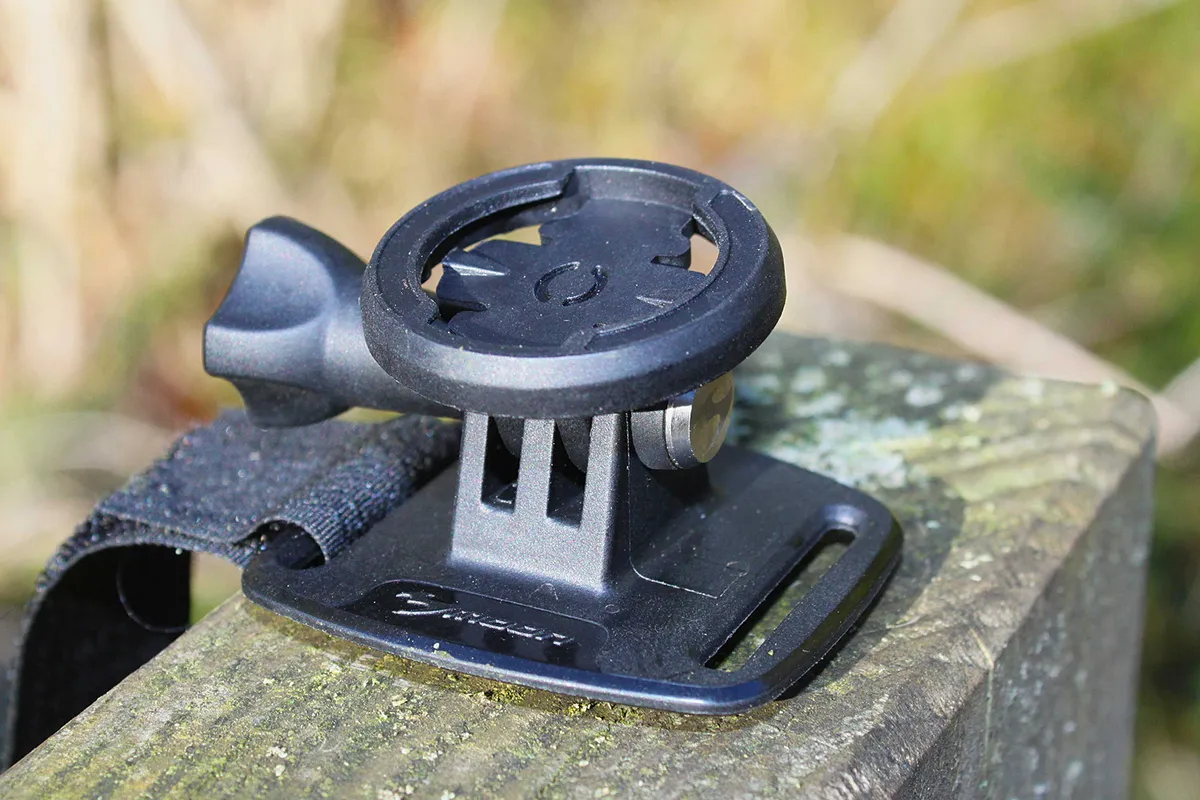
The function button is easy to find and use when riding. Even with the additional features, this light is easy to operate.
On the trail, the Rigel Pro's beam pattern helps it stand out. Its two LEDs produce a well-focused spot with a bright centre.
This is ideal for a helmet light because it helps highlight features further down the trail and doesn't get absorbed into a handlebar light if you're using one.
On the flip side, using it alone doesn't provide a great spread to pick up the sides of the trails. In addition, its white beam light helps illuminate trail obstacles.
Still, it doesn't cause a strong contrast, making it more difficult to see what's in the shadows on the trail.
It's possible to use the Rigel Pro by itself, but it's better off-road when paired with a handlebar light – especially if you want to tackle more technical trails.
Run time is as stated at one hour, 30 minutes on full power.
Moon Rigel Pro helmet light bottom line
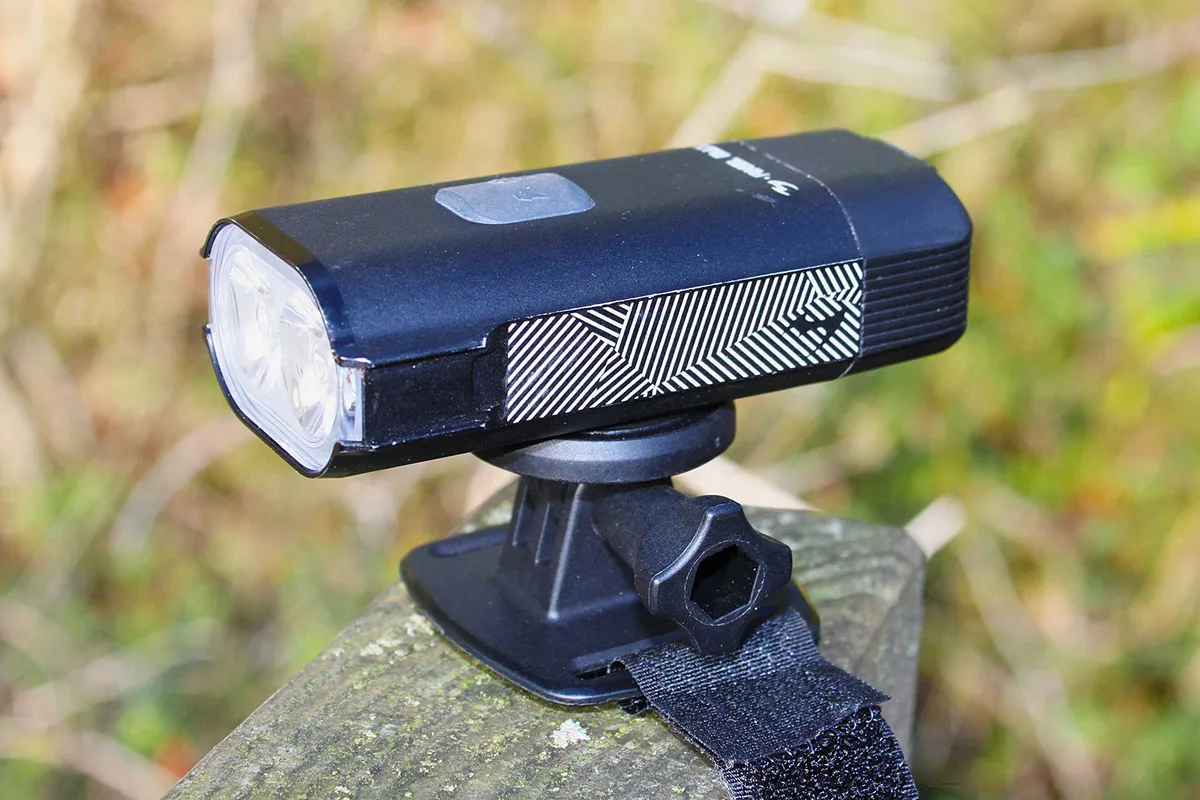
For its 1,000 lumens and £65 price tag, the Rigel Pro throws out plenty of bright white light from its two LEDs.
The tight spot concentrates its power to show trail features, and it has plenty of throw down the trail so you can see what's coming.
The mount is padded and secure, plus there's a battery-warning indicator, and the light is as waterproof as others here. It can be submerged to a depth of one metre, according to Moon.
The beam pattern has a spread sacrifice, but it still covers singletrack trails well. For lumens per pound, it's hard to beat, but it can't compete with lights such as the Exposure Zenith Mk2 for all-out performance.
How we tested
We put six helmet-compatible lights to the test, with prices ranging from £65 to £265. So there should be something for everyone's budget.
The lights chosen here have an output of 450 lumens up to 2,100 lumens. That covers a range of powers suitable for occasional use or as a backup light to full-on high-speed riding.
We tested how each light performs, riding back-to-back runs on the same trails, comparing beam pattern, LED colour, ease of operation and, most importantly, light projection. We also timed them all on max power to find out how long the batteries last, and whether they live up to the brand's claims.
Also tested
Product
| Brand | moon |
| Price | 65.00 GBP,60.00 USD |
| Weight | 175.0000, GRAM () - |
Features
| br_integratedBattery | yes |
| Features | Run time: 1hr 30mins (measured) Battery capacity: 2,200mAh Light type: Helmet, front |
| br_outputLumens | 1000 |
